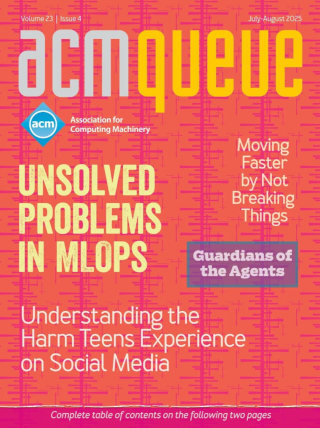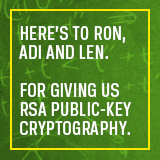
Sanity vs. Invisible Markings:
Tabs vs. spaces
Invisible and near-invisible markings bring us to the human part of the problem?not that code editor authors aren’t human, but most of us will not write new editors, though all of us will use editors. As we all know, once upon a time computers had small memories and the difference between a tab, which is a single byte, and a corresponding number of spaces (8) could be a significant difference between the size of source code stored on a precious disk, and also transferred, over whatever primitive and slow bus, from storage into memory.
Data on the Outside vs. Data on the Inside:
Data kept outside SQL has different characteristics from data kept inside.
This article describes the impact of services and trust on the treatment of data. It introduces the notions of inside data as distinct from outside data. After discussing the temporal implications of not sharing transactions across the boundaries of services, the article considers the need for immutability and stability in outside data. This leads to a depiction of outside data as a DAG of data items being independently generated by disparate services.
The History, Status, and Future of FPGAs:
Hitting a nerve with field-programmable gate arrays
This article is a summary of a three-hour discussion at Stanford University in September 2019 among the authors. It has been written with combined experiences at and with organizations such as Zilog, Altera, Xilinx, Achronix, Intel, IBM, Stanford, MIT, Berkeley, University of Wisconsin, the Technion, Fairchild, Bell Labs, Bigstream, Google, DIGITAL (DEC), SUN, Nokia, SRI, Hitachi, Silicom, Maxeler Technologies, VMware, Xerox PARC, Cisco, and many others. These organizations are not responsible for the content, but may have inspired the authors in some ways, to arrive at the colorful ride through FPGA space described above.
Five Nonobvious Remote Work Techniques:
Emulating the efficiency of in-person conversations
The physical world has social conventions around conversations and communication that we use without even thinking. As we move to a remote-work world, we have to be more intentional to create such conventions. Developing these social norms is an ongoing commitment that outlasts initial technical details of VPN and desktop videoconference software configuration. Companies that previously forbade remote work can no longer deny its benefits. Once the pandemic-related lockdowns are over, many people will continue working remotely. Those who return to the office will need to work in ways that are compatible with their remotely working associates.
Scrum Essentials Cards:
Experiences of Scrum Teams Improving with Essence
This article presents a series of examples and case studies on how people have used the Scrum Essentials cards to benefit their teams and improve how they work. Scrum is one of the most popular agile frameworks used successfully all over the world. It has been taught and used for 15-plus years. It is by far the most-used practice when developing software, and it has been generalized to be applicable for not just software but all kinds of products. It has been taught to millions of developers, all based on the Scrum Guide. Today all our Scrum training is accompanied by a set of cards designed using the Essence standard, which has given us a better Scrum.
The Life of a Data Byte:
Be kind and rewind.
One thing that remains true is the storing of 0s and 1s. The means by which that is done vary greatly. I hope the next time you burn a CD-RW with a mix of songs for a friend, or store home videos in an optical disc archive, you think about how the nonreflective bumps translate to a 0 and the reflective lands of the disk translate to a 1. If you are creating a mixtape on a cassette, remember that those are closely related to the Datasette used in the Commodore PET. Lastly, remember to be kind and rewind.



